Behind every great marketing strategy lies a comprehensive brand identity. Think about it this way: your brand is the walking, talking, living, breathing human element of your business. In a nutshell, it’s what people are going to relate to. Marketing is the vehicle that transports your brand — to commercials, in magazines, onto the digital sphere. But if your marketing efforts aren’t supported by an authentic, believable brand, they will fall flat—just like your sales. Unlock your story and provide your audience an opportunity to connect with words, visuals, and experiences that will keep them coming back for more.
Every great brand has a great story. Unlocking your story is the key to building a solid foundation for your brand to flourish on.
Words hold power. Carefully choosing your language, crafting your message, and digging into voice and tone are crucial to your brand’s communication.
Developing the look and feel of your brand calls for more than a logo and color scheme. Understanding the implicit (and explicit) connotations attached to colors and font types is vital.
Taking your brand to the next level means exploring the senses. From sound to smell, lock your brand into customers’ minds with exceptional experiences.

Understanding your “why” is at the heart of your business. Simon Sinek is known for his talk about “The Golden Circle.” Sinek states that people don’t buy what you do — they buy why you do it. One perfect example of this philosophy is Toms Shoes. There are hundreds of shoe stores across the nation, yet Toms stood out for their simple tagline and greater purpose: buy a pair, give a pair. For every pair of shoes bought, another was donated to someone in need; this further influences buyers to contribute to a cause rather than simply making another purchase. Toms’ “why” has propelled them into a memorable brand with a solid reputation. Having an authentic drive behind your businesses is ultimately the key differentiator that will boost your brand in standing out in the eye of the consumer.
Chances are it may swing and sway as you grow and gain experience, but at the end of the day, your “why” is the fixed point of the pendulum. You need to know your business’s purpose before you can know how to brand and market it to others. Ultimately, your “why” is what’s fueled by your passion, the reason you get out of bed in the morning, and the compass that keeps you moving in the right direction when the landscape isn't easily navigable.
If you’re still defining your “why,” set aside everything that’s out of your control — money, time, manpower, the economy — and focus solely on your goal and why, of all things, your goal is what it is. What motivates you? What problem are you aiming to solve? Get specific and don’t be afraid to dream big. As your answers begin to materialize, naturally you will start to uncover the consumers your company and services seek to serve.
Next, determine what specific audience types will be best receptive of your “why.” These are your buyer personas. Buyer personas are semi-fictional profiles of your desired type of customer — fully bolstered with market data and research to support and flesh out your persona into a living, breathing human.
Your brand should be crafted to speak directly to your buyer personas’ challenges, motivations, and overall characteristics; skipping this step would be detrimental to all your future efforts solely because you’re not targeting the person you need to be. When you capture your ideal customer’s attention, speak to their pain points, and provide an enriching product or service, you simultaneously foster a loyal brand ambassador who can carry your brand infinitely further. This is every business’s dream—and should undoubtedly be your goal.
There are plenty of ways to craft your buyer personas — and four ways not to — but the ultimate goal is to get in their shoes and think like they think. Alongside researching relevant data, asking yourself questions and thinking of their answers is another surefire way to make them real. Bring them to the table for all discussions and ensure your company continues to aim to fulfill their needs and desires when it comes to services and products you offer.
To get started on your target personas, you can download our free template here!
At the intersection of you and your audience, your brand strategy emerges. Now begins the process of constructing and crafting the ideas, language, visuals, and experiences you will need to target your audience’s pain points and resonate with their wants and needs.

Kurt Vonnegut wrote: “Write to please just one person. If you open a window and make love to the world, so to speak, your story will get pneumonia.” The language you use to communicate and market your brand needs to speak directly to those for whom you wish for it to reach. Unfortunately, that can’t be everybody. But by sharpening the focus on those it is intended for, you’ll already be setting yourself up for success.
From startups to corporations, your mission statement is one of the most important pieces of copy you’ll display on your website. Nothing should ever be rushed when creating your brand, but especially not your mission statement.
A mission statement is simply a declaration of your company’s purpose. It’s crucial that it echos your “why” and expresses to readers why your business exists at all. Don’t speak of monetary values or goals, and instead, stay focused on your purpose. The best mission statements are often short and to the point, while intermingling the company’s values, tone, and voice (which we’ll dive deeper into below).
For example, let’s look at IKEA’s mission statement:
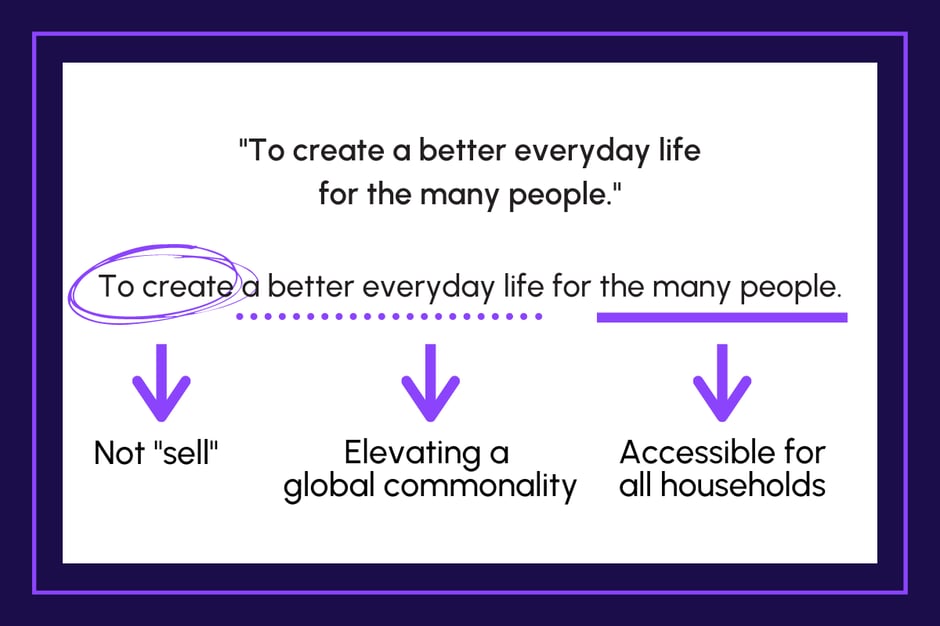
Read without context, you likely wouldn’t guess this was the mission statement of a Scandinavian company primarily known for selling furniture and housewares with difficult to pronounce names.
Their mission statement is strong because rather than focus on what they do — sell furniture, housewares, etc. — they speak of the results their brand creates. In addition, their mission targets a wide span of people, clearly communicating that their goods are intended for all rather than a niche group of billionaires, for example.
Your vision is where you want to see your business in the future. It encapsulates what you imagine your company accomplishing in the world and the difference that it is making day-in and day-out.
When you begin to formulate your vision, think of your business goals and think of the goals of your buyer personas. Mixing your internal goals with the goals of your desired audience is how you further resonate with those looking to spend money with your company. Consider how your business goals of success can be furthered by your audience's personal goals in seeking your products or services.
Here's an example from Tesla. Notice that the difference between mission and vision is that your mission is what you do, and your vision is your business's ultimate goal, or what it's aiming to achieve.
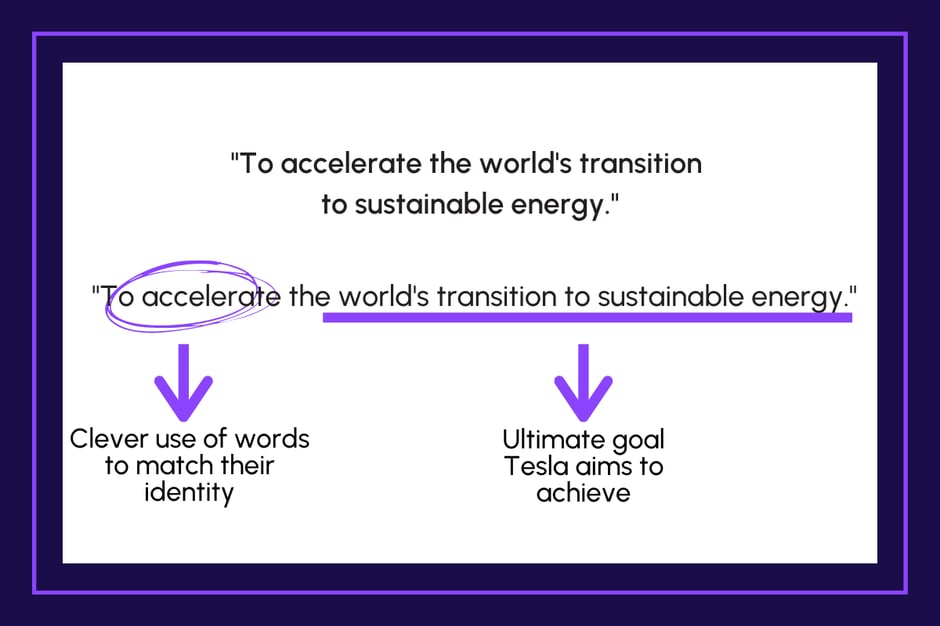
After you’ve completed your mission and vision, it’s time to reflect on your values. Think of these as the pillars that support the foundation of your “why.” These values craft the culture of your company, as well as show your audience who and what you support and the ideals and practices you believe in. Some companies choose to focus on internal values, while others branch out addressing their role in society.
For example, let’s look at a few of our own at Sauce Marketing:
As you can see, your values are a guideline and set of beliefs that direct, steer, and uphold everything you stand for. When you face a problem, these are your rules that you can reflect back on. If you’re trying to make a difficult decision that you worry may hurt the integrity of your brand, having solid values to refer back on as guidance is a great way to ensure that you’re taking responsible actions that remain true to your brand identity.
Yet another important factor to remember about your values and the messages it supports is that it must be authentic. More than ever, the consumer market is looking for brands who are honest in their messaging and whose values align with their own. Skewing or lying about any of these can have insufferable consequences that are impossible to rebound back from.
Simply put, your voice is the personality of your brand. Your voice reflects the attitude and beliefs of your company while affording you the opportunity to cast a memorable, quirky, and/or comical representation to make your brand shine among the competition.
Here are some examples.
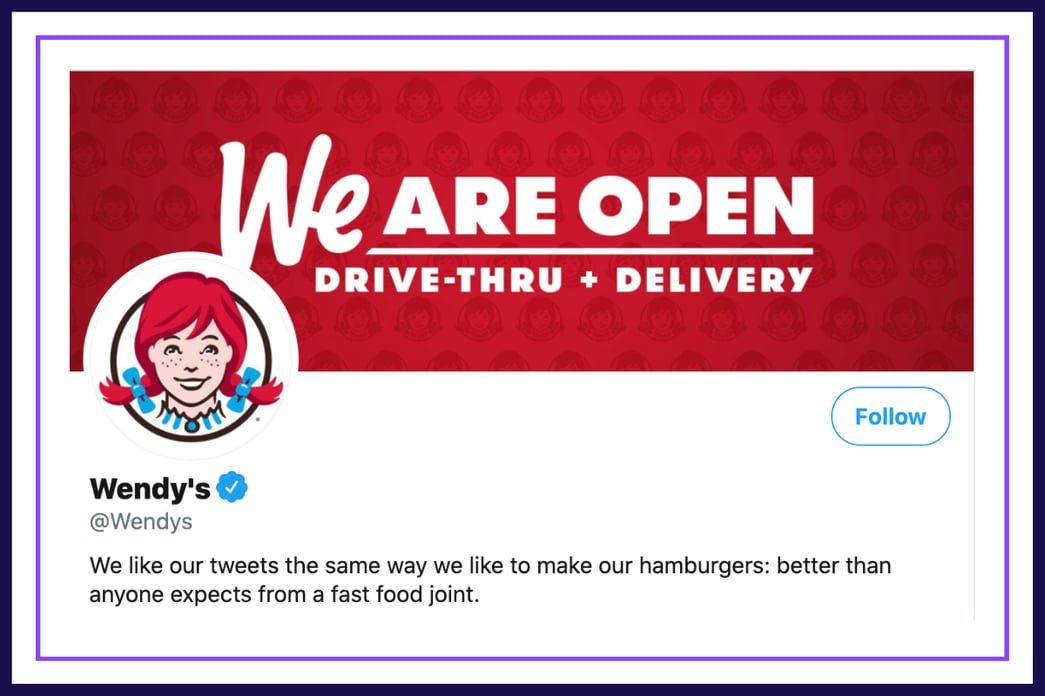
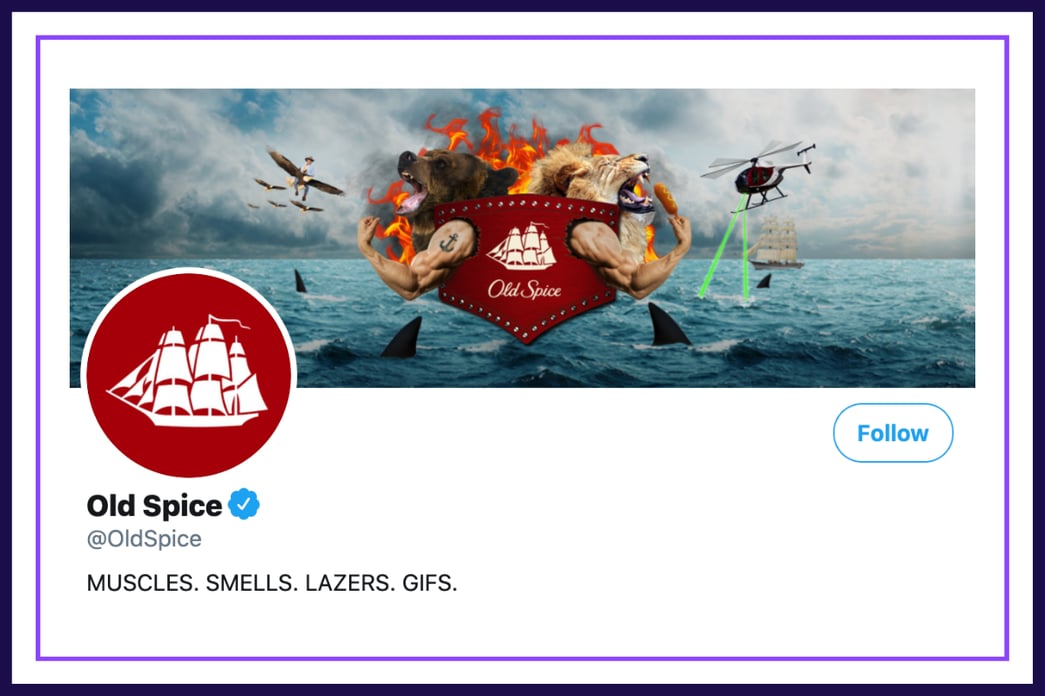
To nail down your brand’s voice, conduct a brain dump of all the adjectives you would like for your brand to encompass. After you’ve created a healthy list, mark off weak synonyms, or those that might feel a hair off from the sound that you are aiming for. The goal is to end with three to five strong words.
After you’ve accumulated your defining voice traits, it’s time to put them into action. Let these adjectives guide your copy across all platforms — website, social media, press releases, and emails. The more defined your voice is, the more likely your brand will carve a memory into the minds of your audience. If you sound like everyone else, you’re likely to be forgotten about — and lose your brand’s consistency.
This one can be a bit tricky. Your tone is the inflection in your words and the subtle nuances that affect the way one reads them. While the voice is consistent, the tone ebbs and flows in relation to the content and context in which you are writing.
For example, let’s look at the copy you might write on social media, specifically Instagram and LinkedIn. Although it may be necessary for your brand to be active on both platforms, using the same tones for both platforms won't yield high engagement as it would if you perfectly curated the message for both.
On Instagram, it’s more acceptable to display a laid-back and cheeky attitude. In addition, you don’t have to worry about using hashtags or making meme references. However, on LinkedIn, a playful tone may fall flat because the medium expects more professional, sophisticated language geared towards a more corporate-minded audience. Industry-specific material and resources and opportunities to network are going to be more of the context here.


They say not to judge a book by its cover, but in today’s day and age when attention spans are lightning-fast and time is the most sacred resource of all, your “book’s cover” must be captivating. Even more, it must acutely synchronize with the identity that you’re crafting. Just like understanding your “why,” your audience, and your communication, your visual brand identity cannot be rushed. Having a solid strategy in place is imperative.
Your brand’s colors will most likely be the most pressing thing your audience remembers about you. Combined with cultural understandings and personal experiences, there is an expansive spectrum of psychology that affects the way we perceive and react to different colors.
The most common colors used in the logos for the top fast food companies around the world are red followed by yellow and orange. Have any brands come to mind yet? Red elicits a feeling of passion and emotion whereas yellow and orange have been shown to make people hungry. The combination of red and yellow or orange, unbeknownst to the consumer, creates a mental correlation in which that fast food brand must offer passionately curated food to satiate hunger. Similarly, many hospitals use red or blue in their logos to signify trust, passion, and strong leadership. These colors are predominant in the political spectrum for much of the same reason.
As you can see, color is a major proponent in determining emotion. We all have colors that elicit specific emotions for each of us.
Fonts are packed with personality; choosing the right font for your logo, website, and overall brand should not be an arbitrary choice or based on personal preference.
Let’s start with fonts for logos. This is your chance to immediately, clearly communicate your industry and provide a glimpse of your brand’s personality. It’s not uncommon knowledge that many fonts are frequently associated with different types of companies. For example, the swirls and spins of cursive are oftentimes associated with recipe blogs, wedding planners, and products that target a feminine audience. Alternatively, bold and sans-serif fonts are going to be directed at a masculine audience and/or companies that provide financial services, real-estate and housing, and medical practices to name a few. If you think this is a coincidence, think again.
Fonts speak volumes and have the ability to arouse a variety of reactions in your reader. This is why knowing your buyer personas — and considering their preferences, thought patterns, likes and dislikes — is important in every element of your brand’s design.
Try this out: How does your reading of the word change as you read it in different fonts?
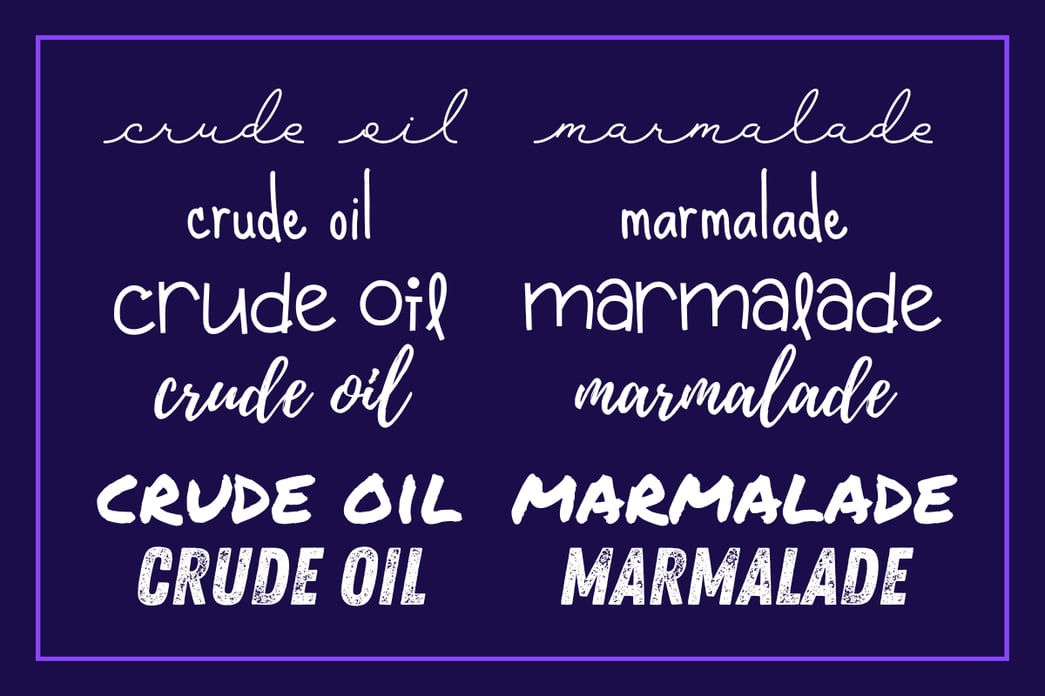
Next, you need to think about your font family for your headings, subheadings, and body text. These fonts should all be thought out and work well together to invoke a specific feeling and style. While there are a handful of tools to help you choose your font family, the bottom line is that your text must be readable before stylish. It’s important to choose fonts that make sense for where they are being used. For example, you wouldn’t use a handwritten style font for your body text that needs to be easily read by your audience.
From the Nike swoosh to the Starbucks siren, these iconic logos were not created overnight. A lot of time, research, and reflection went into both, as all classic logos require. Besides your logo being an instant trigger identifying your brand, it is a symbol for what your brand represents.
Your logo should reflect not only your industry, but also your values. Your logo visually elicits a response from your audience of what your brand represents. A logo can be minimalistic (like Nike) or a bit more detailed (like Starbucks), but should never be complex or convoluted. Simplicity is your goal when deciding upon your logo's design. Due to the fact that consumers will likely view your logo briefly and logos are often displayed on a smaller scale, a logo’s design should be minimal. Think about what your audience will feel at first glance. What emotion do you want to portray? Is there a certain product you want your audience to associate with your business? Does your audience demand clean and clear design or are they more into abstract visuals? When designing your logo, these questions and more should be answered.
Your logo should represent why you are different, why your company is best for their specific needs, and why they should trust you to meet their desires and needs.
You’ve got your colors, fonts, and logo solidified — now what? Package that puppy up into your first official brand style guide!
Think of your style guide as an everlasting yet ever-evolving tool for you, your team, and any new employees or contractors to refer to when new changes arise. Having all of the elements of your brand located in one place allows you ease of access to all of your brand’s elements and a guidebook for those learning the ropes. It’s all important to include why you chose the logo, font, and other elements, so that everyone on your team is capable of communicating your brand’s message.
Equally significant: equipping yourself with a style guide secures consistency across all of your marketing collateral. Have you ever been reading a book and noticed a typo or spelling error? For a moment, you were pulled out of the experience and suddenly doubting the credibility of the writing. This same dissonance can bleed into your brand if you’re not proactive about maintaining a clean look across all buyer touch points.
Most importantly, remember that your brand’s style guide should be routinely assessed and updated as needed. As your business grows and expands, it’s important to ensure that your style guide keeps up to speed as well.

One of the most important things to remember about your brand is this: it doesn’t end with the language and look. From being greeted with free samples after cruising the aisles at Costco, to catching fresh rolls thrown across a bustling Lambert’ restaurants, these experiences all escalate a brand’s overall experience. It’s important for you to keep these details in mind as your business comes to life and touches the lives of those who interact with it.
Let’s take a flashback to being a kid again. You’re outside, doused in sweat from playing an imaginary game with your friends, when suddenly you hear the jingle of an ice cream truck. The sound signified a cold, sweet treat, and even now when you hear it, there’s likely a hint of nostalgia swirling in the air. Powerful, right?
Getting creative with audio branding is a sharp method in boosting your brand’s memory in customers’ minds. From the McDonald’s jingle (Ba-da-ba-ba-ba! I’m lovin’ it) to popular sayings in cereal commercials that make a comeback in Quintin Tarantino movies, choosing the right song or catchphrase can be a goldmine.
Besides memorable sounds, thinking about the way sound waves affect your physical business location is another compelling component to your overall brand experience. For example, a restaurant owner who hasn’t considered noise dampening equipment might be puzzled when all of his marketing efforts are perfect, but his tables remain empty. In addition, certain retail stores have been known to blast their music through the speakers, attracting some customers for the atmosphere than the actual product. This marketing trick is often used to lure young adults in and have their parents throw down the credit card as fast as possible so they can leave.
Ultimately, everything down to the very playlist you curate for your business adds to the memorability of your brand and cues your customers to think of you when they hear certain sounds.
You read that right. If you’re a Millennial, chances are you have vivid memories of hanging out at your local shopping mall and being bombarded by strong scents attempting to lure you into dimly lit retail stores. Did it work? Or steer you away?
Tapping into your customer’s sense of smell is an amazing — albeit strange — and potent method in both attracting and retaining customers. When we consider how our scents, emotions, and memories are intertwined, it’s undeniable that attaching a unique aroma to a brand experience is a successful tool.
Let’s take Disneyland for example. The company pumps distinguishable smells into different areas of the park to further enhance and immerse the experience for their guests. The Haunted Mansion has a musty stench crawling its corridors, while Main Street beckons guests with the fresh smell of popcorn.
For brands not yet as expansive as Disney, don’t fret. This trick is also used in the real estate world to create a sense of comfort and warmth within homes being showcased. Other businesses, like Anthropologie, have established a signature scent that customers love — and wish to own to fill their own home. Other contenders known to use scent marketing include Nike, Starbucks, and Apple.
Even post-purchase, your brand identity should still run strong with your customers. Packaging acts almost as free advertising for well known brands. If you’ve been in the shoe section of any Department Store, you know immediately what brand of shoes are in the bright orange boxes. Alternatively, you might notice people walking around town with white coffee cups and brown sleeves and know, without having to look, where they got the beverage from. When you see a brown package on someone’s doorstep that has a playful smile across the side, you don’t question where they conducted their online shopping. Think of packaging as a way for others to signal their trust in your company — like a walking billboard or five-star review.
Regardless of where your product is sold or if it is shipped or picked up in-store, your packaging helps to finalize the experience you want your customers to have when buying from you. The next time you go shopping, look at the way your products are packaged. Does the cashier wrap each item in tissue paper and place them in a beautiful bag? Do you have the generic “Thanks! Come Again!” printed over and over again? How do each of these elevate your experience with a retailer? Dig deep into the experience your competitors offer their customers and find how you can one-up that experience for your own customers.
We know: that was a lot to take in. For a quick refresh, here are the key points you need to equip yourself with before going out into the world and building your brand:
Follow Us
Copyright © 2007-2023 Sauce Agency, LLC. All Rights Reserved. View Privacy Policy and Accessibility Policy.
Follow Us
| |
Copyright © 2007-2023 Sauce Agency, LLC. All Rights Reserved. View our Privacy Policy and Accessibility Policy.